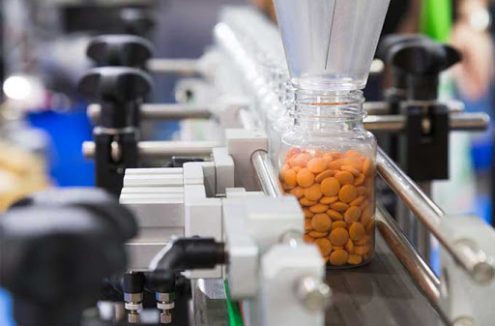Shipping pharmaceutical products takes some special know-how. In many cases, pharmaceuticals are sensitive and must be delivered in a timely manner. Not only are pharmaceuticals delicate, they also can be expensive. As such, they require special precautions when shipping. Learn the rules for shipping pharmaceuticals.
From the factory to the point of delivery, a pharma product’s integrity and quality must be maintained. The pharmaceutical industry works under tight regulations, as does the shipping industry. Know the rules for shipping pharmaceuticals and get it right each time.
Pharmaceuticals are big business. According to Pharmaceutical Research and Manufacturers of America (PRMA), the biopharmaceutical sector in the United States contributes $1.65 trillion to the world economy each year. The pharma sector employs nearly 4.9 million Americans and contributes to the well-being and health of millions more people. Shipping pharmaceuticals is big business, too.
Shipping Pharmaceuticals: What You Need to Know About the Cold Chain
When it comes to moving pharmaceuticals, time is of the essence. Temperature control is also important, too. According to information from Shipwaves, seven out of 10 of the top pharmaceuticals used in the U.S. require temperature-controlled shipping. A slight change in temperature, even of just two degrees, can ruin pharma products. This is why temperature-regulated shipping is important.
Temperature-controlled shipping is part of cold chain logistics. The cold chain must never be broken. Cold supply chain logistics refers to shipping, storing and distributing refrigerated and frozen goods. You might consider cold chain logistics a process, a technology and a science. The process leg refers to the logistics methods used to maintain the cold chain. The technology leg refers to the methods used to maintain temperature. The science part relates to the biomedical and chemical processes that pharmaceutical products must undergo for safe shipping.
The cold chain has several steps to the logistics process. Steps in the cold chain for shipping pharmaceuticals might include:
- Supply: The drugs, vaccines or pharmaceutical products are made and packaged at a plant.
- Transportation: The medicines or pharma products are usually transported in a refrigerated or insulated truck. These trucks undergo routine inspections to make sure they are in satisfactory condition to keep inventory at the correct temperature.
- Storage: Pharmaceutical products might go into cold storage before they are distributed. The refrigerated warehouse can act as a middle ground before pharma products reach their final destination.
- Market: Generally speaking, the last step in the cold chain logistics process is delivery to the final destination where the pharmaceutical is sold or administered.
Maintain Pharmaceutical Temperatures
When shipping pharmaceuticals, it is absolutely essential that the correct temperature is maintained through the entire shipment process. Most pharmaceuticals ship anywhere between 55 and 77 degrees Fahrenheit to ensure product stability. This is where the cold chain comes in handy. Refrigerated trucks can maintain these temperatures, even when the weather outside is scorching hot. Sometimes called reefer trucks, these vehicles are designed to hold a temperature. Reefer trucks can carry a variety of cool products. In addition to transporting pharmaceuticals, reefer trucks often carry fresh produce, cut flowers, ice cream and other cool products.
The cold chain is big business. According to information from ResearchandMarkets.com, the worldwide pharmaceutical cold chain logistics market will be worth $27.7 billion by 2028. This same source indicates the industry is experiencing a compound annual growth rate of 5.26 percent. With these numbers, you can see why there’s big business in the cold chain. Growth in the need for cold chain logistics for pharmaceuticals come from advances in science and technology. Newer biologics and specialty pharmaceuticals require cold shipping. These drugs are used in a variety of applications.
Cold chain logistics isn’t cheap. Each refrigerated truck and trailer can set owners up to and over $180,000. This makes refrigerated trucks a big investment. You’ll find approximately 500,000 refrigerated trucks on the roads today. A well-maintained refrigerated truck can last up to one million miles. Additionally, a reefer truck might use 1,000 pounds of foam insulation to help hold temperature.
Refrigerated Trailers Play an Important Role
One interesting thing about the cold chain is that refrigerated trailers are designed to work independently of the tractors that haul them. Cold trailers feature their own refrigeration unit and power source. This means cold trailers will keep temperature regardless of whether they’re being hauled by a tractor or are on a train, boat or plane. Reefer trailers work like other refrigerators and have three main components that help them stay cool: a compressor, condenser and evaporator.
The compressor is supported by a small engine unit located inside the refrigerated trailer. The compressor takes in a refrigerant in a gas form and compresses it into liquid. The pressure heats the refrigerant fluid.
The hot liquid refrigerant flows from the compressor to the condenser. The condenser helps exchange heat. Here, the heated refrigerant is cooled by flowing through tubing to wide fins. The fins’ wide surface area allows the hot refrigerant to quickly cool. The compressor and condenser work together in a way that’s similar to how a car’s radiator works together to cool the engine.
Follow the Refrigerant Flow
The evaporator is located inside the trailer. When the refrigerant gets to the evaporator, it has given up most of its heat and is now a cool liquid. Refrigerant flows into the evaporator through a throttle-like valve. When in the evaporator, the refrigerant expands into a gaseous form. As it goes through the evaporator, heat is absorbed through finned coils. The trailer’s temperature drops by giving heat to the evaporator for the refrigerant to cool. This process happens over and over until the trailer reaches the desired temperature.
Temperature-controlled shipping isn’t a new concept. The concept dates back to the 1840s, when ice and chilly weather were used to haul cold products via rail. The first cold truck was invented in 1910 and it used ice to keep the cold products chilled. Refrigerated trucks were first used in the 1940s. These trucks were the first to use a roof-mounted chilling system. Technology has changed the cold chain and today’s refrigerated trucks can keep products like pharmaceuticals at the right temperature for days at a time.
Which Companies Rely on the Cold Chain?
Pharmaceutical companies that rely on the cold chain to move their products safely might include:
- Abbvie
- Eli Lilly and Company
- GSK
- McKesson Canada
- MSD
- Purdue Pharma Technologies Inc
- Roche
- Sensitech Inc
- TEVA Pharmaceutical Industries Ltd.
ABCO Transportation specializes in moving items that must remain at temperature, like perishable goods and pharmaceuticals. Refrigerated shipping has come a long way since goods were shipped on blocks of ice. Today’s refrigerated trucks have a high-tech cooling system to help products remain at a safe temperature.
The Rules for Shipping Pharmaceuticals
Temperature-sensitive pharma products like plasma, narcotics and other perishables require special handling and care. ABCO Transportation can provide this special care and handling through streamlined processes. Deliveries of pharmaceuticals are made to medical companies, pharmacies, clinics and hospitals. When shipping pharmaceuticals, security and privacy are a priority. ABCO Transportation can offer expert logistics services and delivery of medical products safely and on time. Clients get a competitive edge.
There are federal rules and regulations regarding the warehousing, shipment and distribution of pharmaceuticals. These rules are set by the Food and Drug Administration.
You might choose to follow guidelines or rules for shipping pharmaceuticals. These rules are in place to:
- Keep pharma products safe and preserve the integrity of your shipment
- Prevent unnecessary loss to make sure pharmaceuticals are available to patients as needed
The rules for shipping pharmaceuticals can be complicated. The most important rule for shipping pharmaceuticals is that temperature must be maintained. Temperature fluctuations of just two degrees could totally ruin a shipment of pharma products. Products that do not maintain the right temperature could become ineffective and even harmful to the patients that receive them. Lots of money is on the line, too. A change in temperature that ruins a lot of pharmaceuticals could cost hundreds of thousands of dollars.

Packaging is Crucial for Pharmaceuticals
Another rule for shipping pharmaceuticals is that packaging must be thorough and correct. In addition to being shipped in climate-controlled trucks, pharma products should be shipped in insulated containers. These thermal packages can protect products from temperature fluctuations, damaging sunlight, humidity and more.
It is important to know which pharmaceuticals require refrigerated haulage. Seven out of 10 pharma products require temperature-controlled shipping. Biological products like hemoglobin, regenerative matter and tissue require extra care when being shipped. These products are often put in thermal, cryogenic containers that can hold temperatures of -150 degrees Celsius.
Some shippers use thermal pallets when moving pharmaceuticals. These specially designed pallets offer another layer of protection. Additionally, insulated thermal pallet covers can help keep the pharma products undamaged and safe.
If you are shipping pharmaceuticals, it is important that the carrier you choose has the proper license and equipment.
It is important to follow safety and security procedures when shipping pharmaceuticals. Cargo theft is a real threat, especially when hauling products like narcotics. An experienced logistics provider can help manage these threats and keep pharma products safe.
Risks of Shipping Pharmaceuticals
There are many risks associated with shipping pharma products. In addition to risks involved with temperature fluctuations, you might find other concerns on the road when hauling pharmaceuticals.
Cargo theft can be a significant concern when hauling pharmaceuticals. This results in unnecessary product loss and a disservice to patients who need the pharma products. Cargo theft could result in pharma products ending up on the black market, which can promote crime and other nefarious activity. Because pharmaceutical warehouses are very secure, most thefts occur when products are in transit. This information comes from pharmaceutical company SensiTech, which asserts that 75 percent of pharma product thefts come when products are on the road. Technology like GPS cargo tracking can help thwart theft and aid in product recovery.
Because some pharmaceutical cargo can be prone to theft, shipping it can be dangerous. One thing to think about is the number of people who handle the cargo. Some logic suggests the more people who handle the freight, the higher the chance it might be lost or stolen during shipping. If you are shipping pharmaceuticals, you should choose a shipper that will go with a direct, non-stop route. This reduces the handling of the product. Additionally, the way you label your product can help prevent theft. Discrete container labeling can help keep the contents of your pharmaceutical packages secure.

Follow Cold Chain Instructions
Carrier instructions can come in handy when hauling pharmaceuticals. Instructions given to carriers might include details like driver rules, confidentiality, secure handling of freight, notification on incidents, shipment tracking and required response times. These rules are generally outlined in contracts signed when the carrier agrees to work with the client.
Driver instructions are also important. Drivers play a key role in the supply chain. A driver’s attention to detail is essential when hauling life-saving goods like pharmaceuticals. Drivers keep products safe by avoiding unnecessary stops, avoiding high-crime areas on their route and minimizing time the vehicle is left unattended.
Driver training is also important. In addition to knowing the rules of the road, drivers should receive special training for working in the cold chain. It is important drivers are knowledgeable about the workings of refrigerated trucks. Drivers should have the skills needed to make sure their truck maintains the correct temperature.
Following the above rules can help transportation companies and drivers avoid risks when shipping pharmaceuticals.
Ship Pharmaceuticals with ABCO Transportation
ABCO Transportation is a family-owned refrigerated trucking company formed in 1993. Our experience hauling temperature-controlled freight can give you the edge you need to get your pharmaceutical products to their destination safely and on time. As a leader in the shipping industry, ABCO Transportation offers experience and professionalism. Our team stays ahead of demand in the marketplace.
Get down to business and let ABCO Transportation’s knowledge of the rules for shipping pharmaceuticals get your product there safely and on time. Take advantage of our cold chain and let us work for you.




